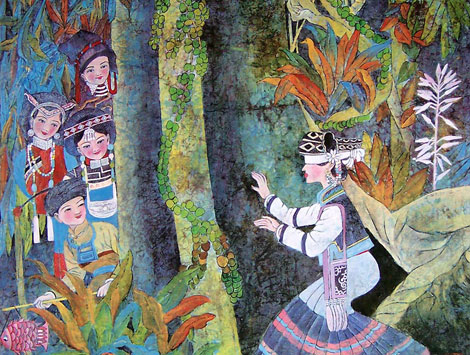
With a population of 6,572,173, the Yi Nationality is one of the oldest minority groups in the southwest of China, mostly concentrated in the mountain areas of Yunnan, Sichuan, Guizhou provinces and the northeast of Guangxi Zhuang Autonomous Region. Meandering rivers, deep valleys, ripply lakes, and rich flatland altogether make the Yi areas look like fairylands.
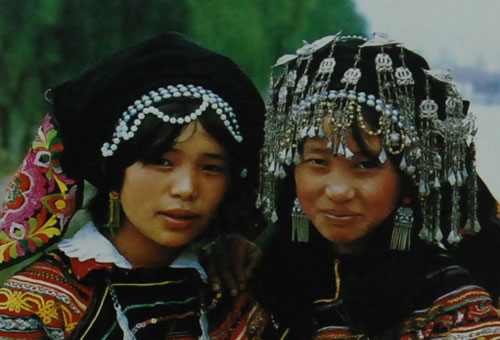
Yi women of Chuxiong Prefecture. Yunnan Province, in their ethnic clothes.
The Yi people has many branches. They called themselves variously such as "Nuosu", "Nasu", and "Niesu". The name of Yi Nation¬ality was generally accepted after the founding of new China.
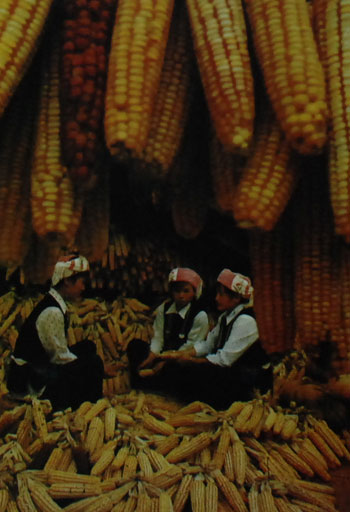
Nasu Yi women threshing corn
The Yis used a solar calendar in old days. Most of them plant crops and some raise animals. The Yi language, containing 6 dialects, belongs to the Tibet-Burmar group of the Sino- Tibetan family. The syllabic Yi script is still in use. Many valuable works in history, literature, medicine and folk tales are written in the Yi language. Music of the Yi people is unique and the people love to sing and dance. Traditional silver ornaments, embroidery, lacquer painting, carvings and paintings of the Yis are full of folk features.
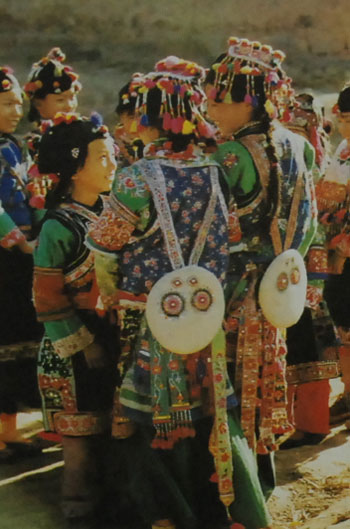
Yi women of Welshan County. Yunnan Province wear colorful clothes. Their most prominent mark is the round ornament made of felt hanging at waist.
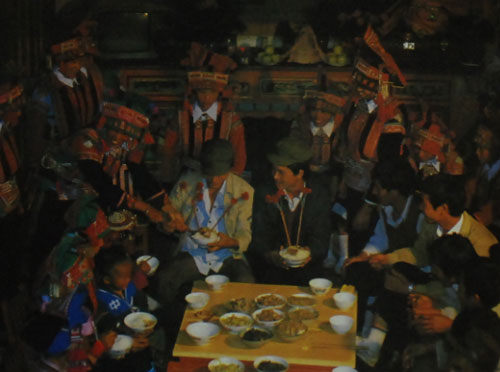
An amusing wedding of the Huayao Yi people living in Yuxi Prefecture.
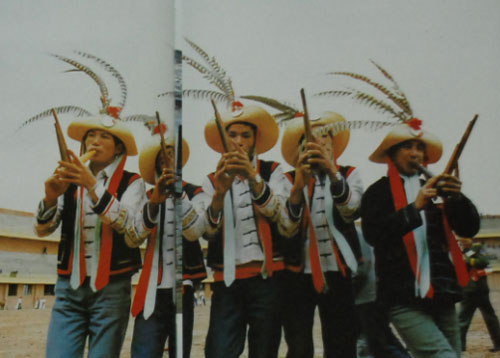
Wearing their ethnic clothing,Yi people,living in Yunnan Province,blowing gourd pipes during the Torch Festival.
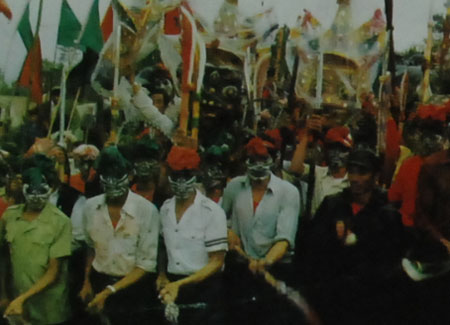
In the first month of a lunar year, Yi people, living in Lufeng County, Yunnan Province, celebrate their Broadsword Festival, which more or less resembles the Hans' Shehuo. a religious festival with art performance to sacrifice to God of land. The Yis, with their face painted and broadswords in hand, parade for a good harvest in the coming year.
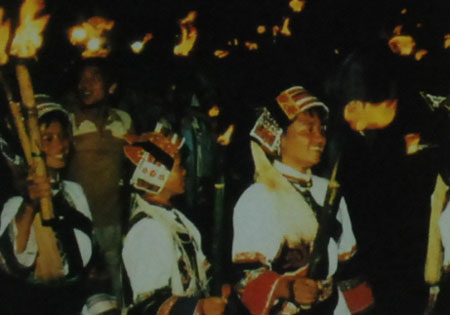
When the night falls during the Torch Festival, Yi people gather in the field, torches in hands, to exorcise evils and pray for fortune.
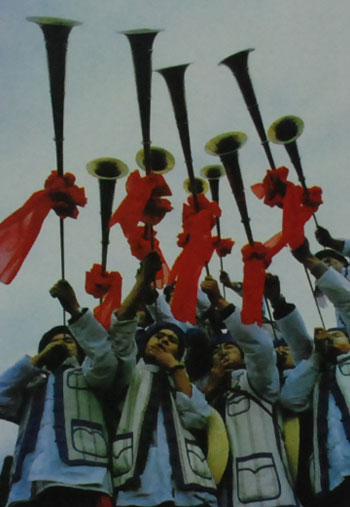
Normally, the Torch Festival, the most important to the Yis, begins with a mountain horn performance.





